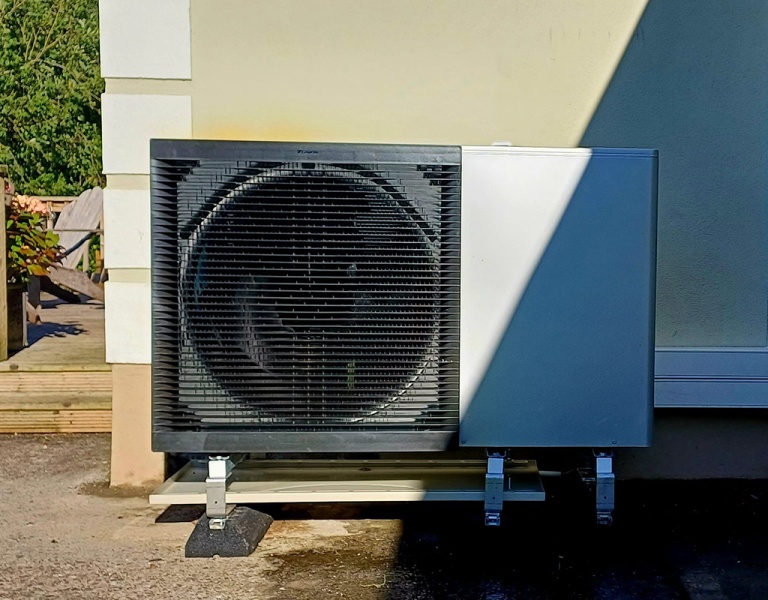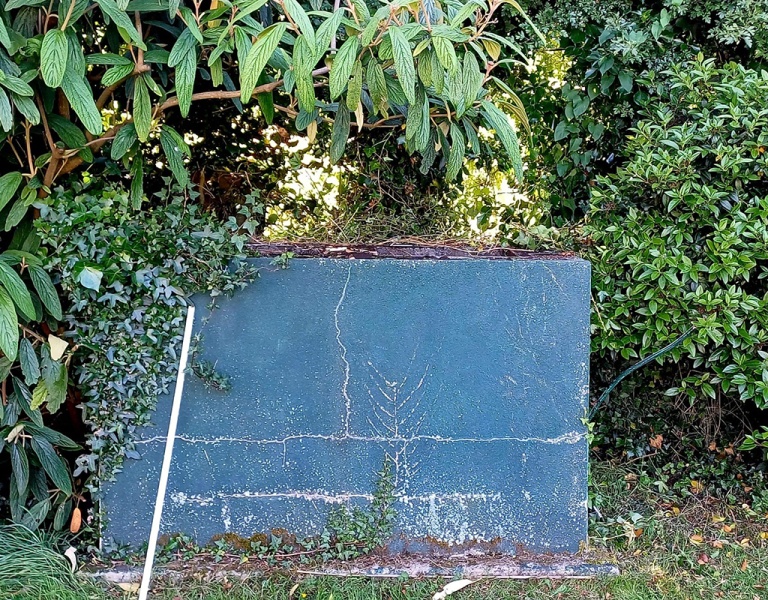How we became the proud owners of a heat pump

This week, after 35 years of oil-fired central heating, our household showed fossil fuels the door and got a heat pump. I have to say, it already feels great to think that heating our home will now result in 40% less CO2 emissions.
Coincidentally, at time of writing, the EPA have just announced a 7% reduction in greenhouse gas emissions from people's homes last year. This is testimony to collective actions by all of us having a real and lasting an impact.
It might seem almost obvious that an SEAI employee would already have a heat pump, or an EV, or both. However, while we may know a bit more about the technology and the benefits, we are after all just ordinary homeowners that have the same challenges with competing priorities and having to make the books balance etc.
Planning ahead
So how did we get here?
When we moved into the house 20 years ago, we had to replace an old oil boiler. Heat pumps were not a real consideration at the time. So, we went with a new oil boiler, with a likely useful life of around 15 years.
Every year our boiler service guy reassured us that the boiler was running fine. But, maybe four or five years back, there was talk of pumps making noises, fans not being great, and small leaks that needed attention. Which clearly signalled that the boiler wasn't going run forever.
Which brings me to probably the best advice I can give from my experience. If you're thinking of changing over to a heat pump, do your research early, before your current boiler breaks down for good. Because, if that happens, you will most likely go for the quickest fix and not necessarily the best option; the dreaded grudge purchase of a direct replacement oil / gas boiler, salved only by the relief that the heating is back on.
The upgrades began
During Covid, we topped up the insulation in our cavity walls, grant aided by SEAI. We didn't have a BER when we originally bought the house, they didn't exist back then. So I was pleasantly surprised when the post insulation BER revealed that we were a C1 and even better, that our home was very likely to be suitable for a heat pump, with perhaps just a couple of minor additional upgrades.
Looking over the BER advisory report, two things stood out. The front and back doors were letting the heat escape and we had a gaping hole in the living room wall a.k.a. an open fireplace. But hey, nothing adds ambience like a fire in the hearth, a treat we succumb to occasionally. Unfortunately, the rest of the time that gaping hole was pulling air and lots of expensive heat up the chimney like a vacuum pump. It had to go!
Earlier this year, we decided to install a high performance insert stove, which dramatically improved the air tightness of the house, and at least doubled the efficiency when we wanted to have that little bit of open fire ambiance. We replaced the front and back doors with higher performance triple glazed, composite doors. Both upgrades greatly improved the BER meaning we now had a 'heat pump ready' home.
That got us really thinking; would we swap out the now 20 year old boiler and go renewable with a heat pump? Or simply replace it with the familiar (oil boiler)? As I said before, through my day job, I was already pretty familiar with heat pumps. I understood the multiple benefits: greater comfort, lower emissions, smarter, healthier, constant hot water, and no need to think about oil tank levels or refills. And we'd never have to worry about an immersion switch ever again - heat pumps are really efficient and smart when it comes to providing you with lots of hot water.
Myths and misconceptions
I wasn't concerned by any of the misconceptions that are out there, such as they won't work in cold weather, or that they make too much noise, or that they only work with underfloor heating.
As an aside, it really bugs me when people say that heat pumps won't work when the power goes. While true, the fact is nor will oil or gas central heating work because they use electrically powered pumps to circulate the heat.
I just had to get over some well aired barriers that most homeowners face. Did we have enough space outside and inside the house? How disruptive would the works be? Would we need to replace many or all of our radiators? Could we afford it?
That meant talking to a supplier to understand the specifics for our home. This started with an initial phone consultation to discuss the project. I next sent them my BER documents and some photos of various aspects of the current heating and electrical systems in the house. That led to an in-person survey of the house, to further explore what we wanted and what options we had for the system. And ultimately a Technical Assessment, necessary for the SEAI heat pump grant.
Possible barriers

And so, to the possible barriers we had to consider:
- Space: We are lucky to live in a rural area, so space was never going to be a real issue. With a good deal of space outdoors we could go with a monobloc unit (more workings contained within the main fan unit), meaning less space needed inside the house. The heat pump could go exactly where the old outdoor boiler was.
- Disruption: Firstly, with a monobloc unit, the only big physical change was that our 170 litre hot water cylinder would be replaced with a 210 litre cylinder, with some hot press space foregone as a result. Plus, the original flow / return pipes were deemed too small, so they would have to run totally new pipes from the heat pump. Again fortunately, because we live in a dormer bungalow, those pipes could go through the attic crawl space and back down into the hot press area. There would a lot of plumbing reconfiguration in the hot press - but that could all be achieved very tidily.
- Radiators: Our house was built in 1995 with a radiator-based system, no underfloor heating. When we moved in, we replaced two single rads with doubles. Lo and behold, the engineer recommended only one other single rad to be replaced. Our system already had three manually controlled zones, they would be motorised and linked with a smart app (we previously had a single, manual timer / thermostat). We decided to add five thermostatic radiator valves while the system was drained, giving us the ideal opportunity to make the system even more controllable.
- Cost: The big one. Roughly speaking, and I mean roughly, the project cost could be split into thirds:
- What we would have to pay for a replacement oil boiler, which was imminent, along with all the additional smart controllability which we added.
- The SEAI heat pump grant of €6,500 plus an additional €200 grant for the Technical Assessment.
- The cost we would take on as part of our own clean energy transition. Not an insignificant sum I will stress. But we could afford it, with the assistance of a low-interest green credit union loan. I also knew that longer term I would be boosting the value of our home (better BER). The investment in insulation and a more energy efficient heat pump system would greatly reduce our energy use and save on the monthly energy bills. Plus it is likely that fossil fuel prices will rise further in the future making the operational costs even more favourable.
We now have a heat pump in our home for less than 24 hours. And even though it is a cold and wet July (2024) out there, it has only had to heat the hot water so far and has done so admirably.
I've been exploring the app and watching YouTube videos to learn more about how to make the system work best for us. (Did I tell you that I love smart tech? And heat pumps are bursting to the seams with smart tech.)
Come the autumn, hopefully late autumn, we will start to experience the new heating regime of a heat pump, learn the little nuances. We'll take comfort in the fact that the heat pump will require little interaction by us as it maintains a constant, comfortable temperature in our home. And we'll reap the benefits of lower emissions, higher comfort and no more oil tank refills!
A heat pump is quite simply the best heating system out there today. It is the most efficient way to heat your home and is completely future proofed relative to other options.
We've followed our latest SEAI campaign and shown fossil fuels the door. Isn't it time you did so too?
Learn more about home energy upgrades


